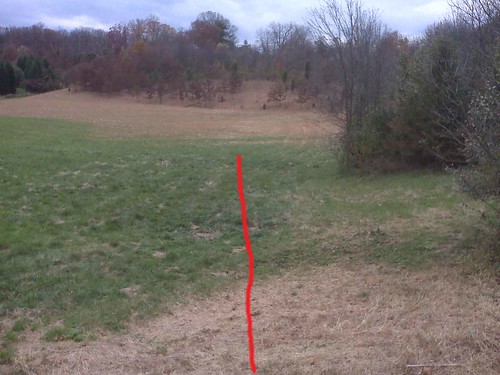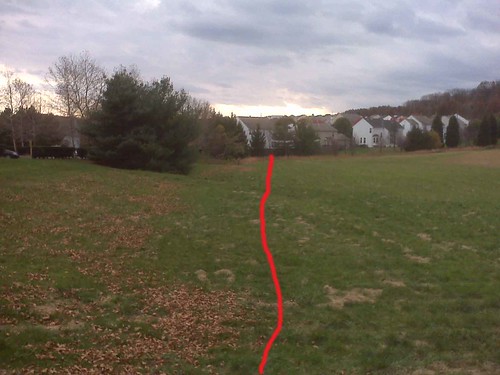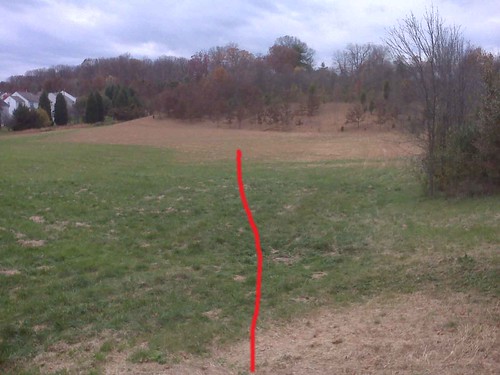SERIES A. Delayed, interrupted land triple with blind (Laddie, then Lumi)
For today's series, I used three remote launchers with weighted streamers and pre-positioned frozen ducks, and an OD for the blind.
The first mark was on the right, thrown right to left at 60 yards on an angle back from the RL. After the dog watched the first mark thrown, the dog was handled to the 160-yard blind to 75° to the left, then sent to pick up the first mark. With the dog accompanying me on lead, I then placed a duck at 70 yards nearly in line with the blind. Back at the SL, I used another RL to throw another mark on the right, thrown right to left at 110 yards on an angle in from the RL, and on a line that took the dog thru the fall from the first mark. The last throw was on the right, left to right at 70 yards, the bird that I had gone out and planted after the dog had picked up the first mark and the blind. After the last two throws, the dog was sent to the 70-yard mark on the left, then the 110 yard mark on the right.
As I understand the terminology, this was an interrupted series because the dog ran the blind after watching the first mark thrown, but before picking it up. And this was a delayed series because the last two marks were not thrown until the dog had picked up the blind and the first mark.
OBJECTIVES
My primary objective with this series was for Lumi and Laddie to practice running a blind even though a mark had been thrown and not picked up. Both dogs did well, with no attempt to veer toward the first duck while running the blind.
A second objective was to work on memory-birds. The second mark was a memory-bird because it was run after the dog picked up the third mark as the go-bird first. That was a normal double. The first mark was also a memory-bird, but a more unusual one in that the dog was first handled to the blind, then had to remember the memory-bird that had been thrown earlier. Both dogs retrieved that memory-bird without handling, but Lumi pinned it whereas Laddie required a moderate hunt to find it.
An objective related to the second objective was giving the dogs practice with retired guns, that is, gun stations where the thrower disappears from sight after throwing the mark. One advantage to working with RLs is that they are usually invisible from the SL, effectively acting as retired guns.
A third objective was practice with a convergent double, the second and third marks.
A fourth objective was practicing an angle-back and an angle-in throw, the first and second marks respectively.
A fifth objective was practicing running thru a previous fall, from the first mark, to get to a later bird, the second mark. This was difficult for two separate reasons. First, advanced dogs have learned not to run the same line twice, so in the unusual case where they are sent on the same line, they tend to veer around the first fall, taking them off the line to the second fall. Second, if they stay on the correct line or find their way back to it, they can be distracted by scent from earlier falls on the shorter throw and have difficulty driving thru the area of that fall to the longer fall where the bird is.
In addition to those challenges, another objective was to build motivation by rewarding the difficulties of handling on the blind, and the interrupted retrieve of the first mark, with the relatively easy and exciting double of the second and third marks.
PHOTOS OF SERIES A

Series A 60-yard mark

Series A 160-yard blind

Series A 110-yard mark

Series A 70-yard mark
No comments:
Post a Comment